Heraldic Tinctures: Difference between revisions
From Compendum Caidis
Jump to navigationJump to search
m (→Furs) |
|||
| Line 2: | Line 2: | ||
==Colours and Metals== | ==Colours and Metals== | ||
{| class="wikitable" | {| class="wikitable" | ||
|- | |- | ||
! | ! Metal !! Metal !! Colour !! Colour !! Colour !! Colour !! Colour | ||
|- | |- | ||
| | | [[File:Argent100.gif]] || [[File:Or100.gif]] || [[File:Azure100.gif]] || [[File:Gules100.gif]] || [[File:Purpure100.gif]] || [[File:Sable100.gif]] || [[File:Vert100.gif]] | ||
|- | |- | ||
| Or (Yellow or Gold) || | | <center>Argent <br /> (White or Silver) || <center>Or <br /> (Yellow or Gold) || <center> Azure <br /> (Blue) || <center> Gules <br /> (Red) || <center> Purpure <br /> (Purple/Violet) || <center> Sable <br /> <center>(Black) || <center> Vert <br /> (Green) | ||
|} | |} | ||
Revision as of 09:09, 24 November 2022
Heraldic Tinctures: Tincture is the limited palette of colors and patterns used in heraldry. They are classified as metals, colours, or furs. As a general rule of Heraldic Design, do not put Metals on Metals or Colors on Colors.
Colours and Metals
| Metal | Metal | Colour | Colour | Colour | Colour | Colour |
|---|---|---|---|---|---|---|
 |
 |
 |
 |
 |
 |

|
(White or Silver) |
(Yellow or Gold) |
(Blue) |
(Red) |
(Purple/Violet) |
(Green) |
Furs
There are examples of other "furs" but these are the most common.
| Name | Type | Example |
|---|---|---|
| Vair | Fur | 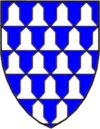
|
| Counter-Vair | Fur | 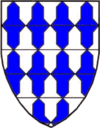
|
| Potent | Fur | 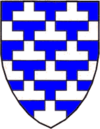
|
| Counter-Potent | Fur | 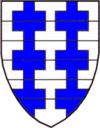
|
| Ermine | Fur | 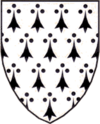
|
| Ermines | Fur | 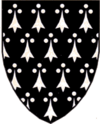
|
| Erminois | Fur | 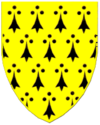
|
| Pean | Fur | 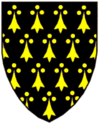
|
| Papellone | Fur | 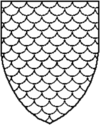
|
Stains
Stains (stainand colours or staynard colours): are generally not used in SCA Heraldry. In medieval heraldry, the use of a stain represents a less-than honorable augmentation (abatement or rebatement) imposed by an heraldic authority or by royal decree for misconduct. These colours include:
- Murrey: Deep mulberry-coloured, or reddish purpl (Darker than Purpure).
- Sanguine: Blood-red (darker than Gules)
- Tenné (tawny): orange-tawny colour, though orange is considered distinct in continental European and African heraldic traditions.